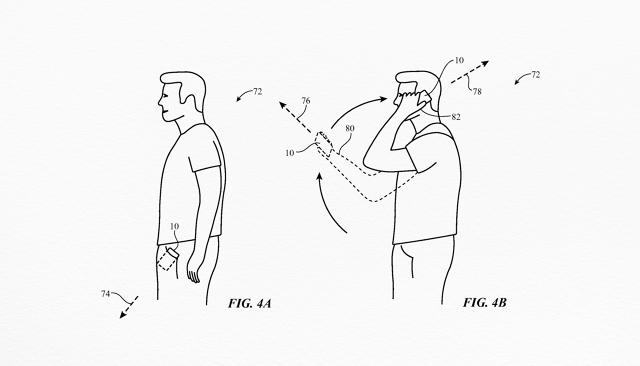Criticizing larger, so-called "phablets," Steve Jobs once said that the iPhone was the perfect size, because you could easily use it with one hand. Today, though, the majority of smartphones Apple makes are too big for ergonomic one-handed use, and while iOS has a built-in one-handed mode called Reachability, it's pretty limited, essentially cutting the screen in half. A new patent from Cupertino suggests an intriguing alternative: an iPhone that can dynamically adjust its UI to the way it's being held.

In the newly published patent, which was first filed in late 2014 around the time of the iPhone 6's debut, Apple describes a way for an iPhone to detect how it's being held. The phone dynamically adjusts where buttons and on-screen controls are positioned, accordingly. So if you're holding your iPhone with the right hand, iOS might display a special keyboard for one-handed use on the bottom right of the device, or adjust the buttons in an app so you can hit them with your thumbs.

Functionally, this patent is similar to something Microsoft proposed earlier this year: a specially designed smartphone that that could detect how you are gripping your phone thanks to pressure-sensitive sensors in the sides of the device. Apple's patent mentions pressure sensors as something that would be nice-to-have, but the company also says that the iPhone's existing array of sensors is sufficient to accomplish the same task.
This is where Apple's solution gets clever. Remember Antennagate? It was a widely publicized design flaw in the iPhone 4 that caused the phone to lose its signal when it was held in a certain way. In the patent,Apple describes how antennas can actually be used in lieu of pressure sensors to detect how the smartphone is being held. The reason this happened is because of something called antenna attenuation—say that five times fast—which basically changes the way radio waves interact with an antenna depending on how it is being held. Although the iPhone 4 had worse attenuation issues than most smartphones, leading to dropped calls, all mobile devices experience spikes and dips in wireless performance depending on how they're being held. Apple would just track those, and use them as a way of tracking how the device is being held.

Apple also suggests other ways this mode could be made to work with existing iPhones. For example, an iPhone with a Touch ID fingerprint sensor could determine which hand the user is holding it in simply by which finger he used to unlock the device. Orientation and motion sensors, also existing in the current iPhone, could also be used to make a best guess based upon past data about how someone is holding a device, and in which hand.
It's a compelling idea, although considering the fact that it is two years old, and Cupertino almost never tips its hand through patents, it seems unlikely Apple will bring the feature to market, at least as described here. But coupled with new mutual capacitance touch screens that can detect a finger approaching before it actually hits the glass, this patent is still intriguing. When the iPhone 7 arrives, maybe it will come with an adaptive nick-of-time UI that practically reads your mind.